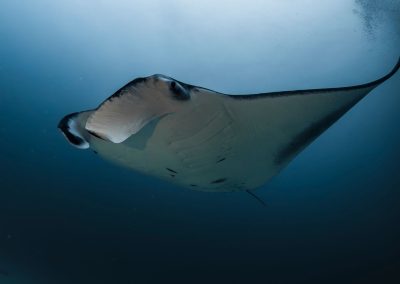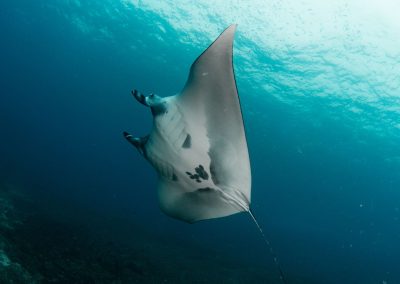Manta Ray Blog

Why swimming and snorkeling skills are a prerequisite to join our manta ray tours
Learn why we require swimming experience for our manta ray tours. Safety and enjoyment depend on proper ocean skills and recent snorkeling practice.

Manta rays vs stingrays: key differences explained
If you’ve ever mixed up manta rays with stingrays, you’re not alone. They share a similar shape but their habits, diets, and even their personalities in the ocean are quite different.

Tracking manta rays: how researchers follow the gentle giants
Explore the different techniques used worldwide to track manta rays and how you can contribute with your own photos.

The fascinating anatomy of manta rays
Explore the anatomy of manta rays, how they're built to feed, move, and survive in the open ocean, and what makes them so unique among marine animals.

What to expect if you book a moonlight swim during winter
Winter in Hawaii brings bigger swells, lower visibility, and unpredictable seas. Find out how these conditions impact manta ray snorkeling tours.

Atlantic manta ray: science confirms third species
The Atlantic manta ray is now officially recognized as the third manta species. Explore this major marine discovery and what it means for conservation.

The skin of manta rays: slimy suits with built-in armor
The manta ray skin is structured to help them glide through water, fight infection, and recover from injuries, but it’s easily damaged by humans, reefs, and other hazards.

Manta ray evolution through (pre)history
Manta rays evolved from jawed fish into the graceful ocean giants we know today. Here’s how they made that journey over millions of years.

Inside the coral reefs, natural habitat of the reef manta
Coral reefs are rich ecosystems that provide food, shelter, and structure for marine life. Learn how they work and why they’re so important for manta rays.

Are Manta Rays Cold-Blooded or Warm-Blooded?
Manta rays aren’t your typical cold-blooded fish. Learn how they warm specific areas of their bodies to swim faster and think quicker in the ocean.

How Manta Rays’ Movements Are Inspiring the Future of Engineering
The graceful movement of manta rays has led to engineering breakthroughs. Explore how their unique swimming patterns influence robots, art, and future tech

Wild Adventures Need Wild Responsibility: Guest Questions we Wish Were Jokes
Think these questions are too wild to be real? Think again. Here’s what not to ask before your manta ray swim - and why safety always comes first.

Manta Rays Myths and Legends Around the World
Discover how manta rays have inspired myths and legends across Pacific Island cultures, Hawaii, and beyond. Learn the fascinating cultural significance of these gentle ocean giants.

The Size of Manta Rays: How Big Can they Grow?
Manta rays are one of the largest creatures in the ocean. With wingspans wider than your car, these gentle giants make a lasting impression as they glide beneath the surface.

Behind the Scenes: How Georgia Aquarium Gives Manta Rays an Annual Check-up
Regular wellness exams are essential for manta rays in human care. The Georgia Aquarium team has come up with a creative and efficient way to conduct these check-ups, ensuring the mantas’ well-being.
No results found.

Free Downloads

Manta Ray Facts & Figures Ebook
Amaze your friends and family members with your knowledge of the gentle giants.
→ GRAB YOUR COPY

Guide to Swimming with Manta Rays
All the things you need to know before you embark on this adventure of a lifetime.
→ GET IT NOW

10 Tips for Marine Photography
Learn to capture life-changing moments underwater.
→ I NEED THIS
